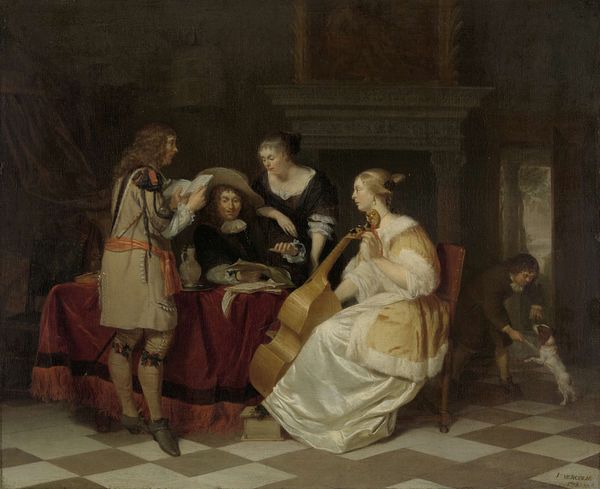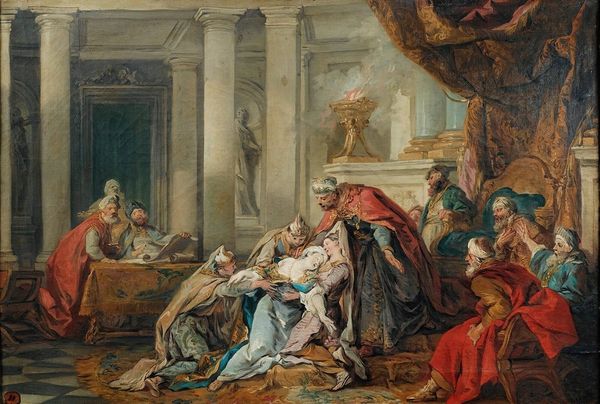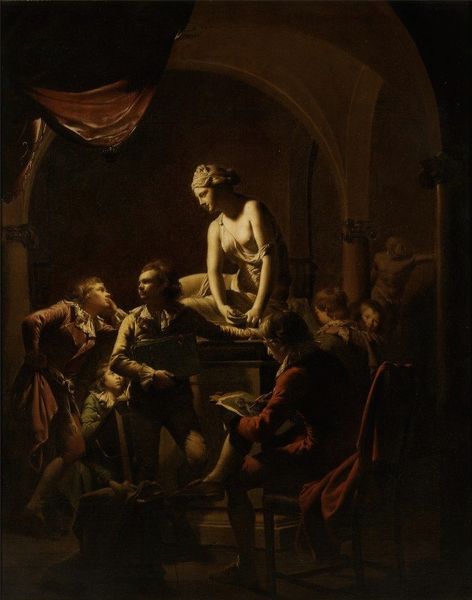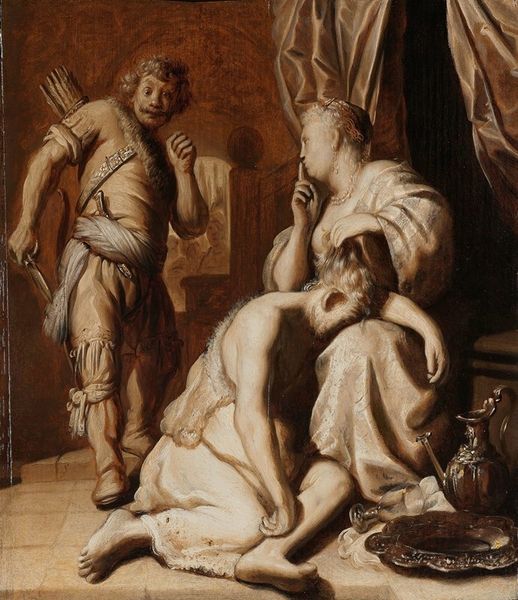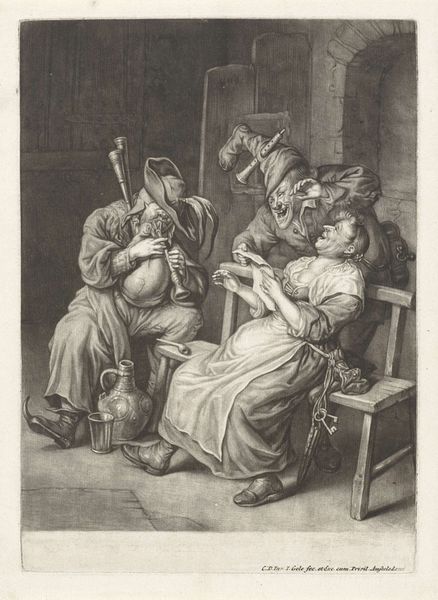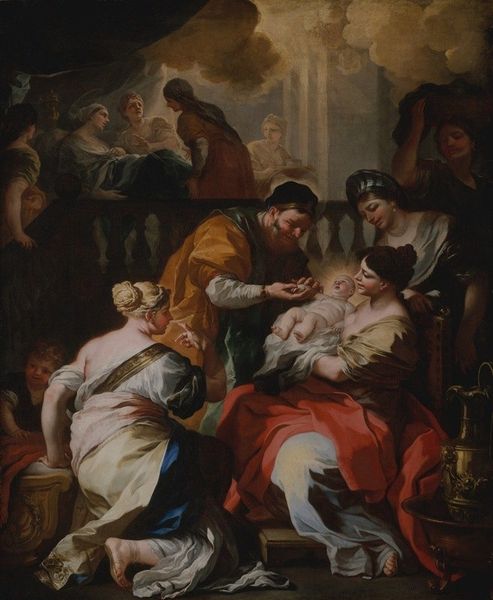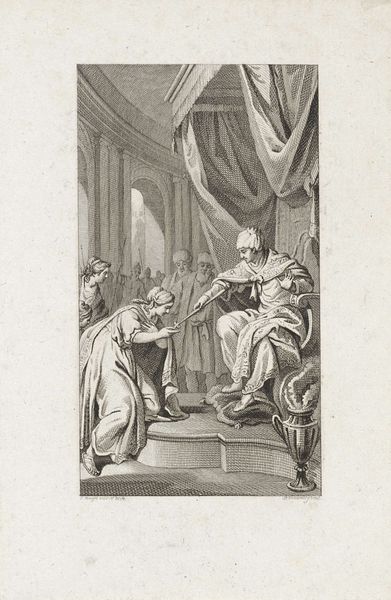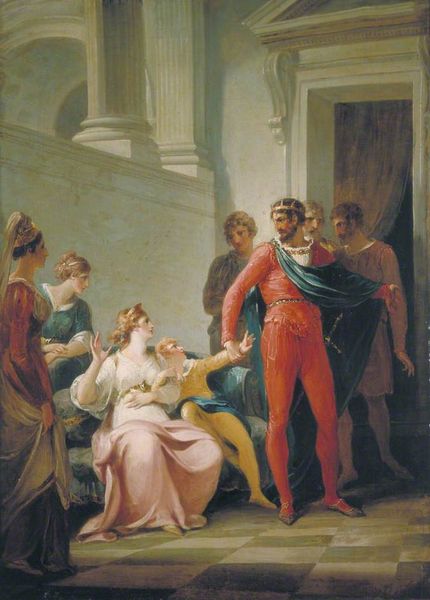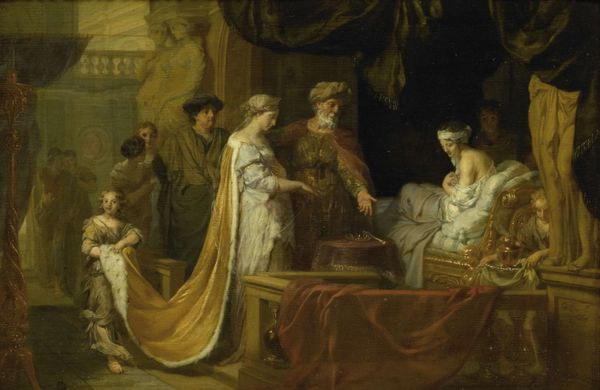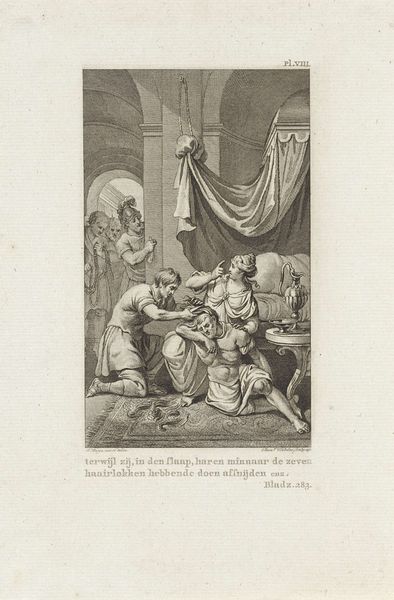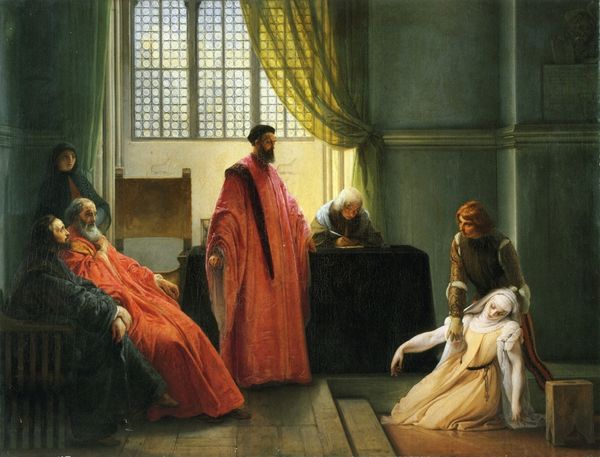
painting, oil-paint
#
portrait
#
narrative-art
#
baroque
#
painting
#
oil-paint
#
figuration
#
oil painting
#
mythology
#
history-painting
#
portrait art
#
fine art portrait
Copyright: Public Domain: Artvee
Curator: We are looking at “Achilles Playing the Lyre before Patrocles,” an oil painting dating back to approximately 1675 by Gerard de Lairesse. What is your initial impression? Editor: Brooding. The palette is deep, even muddy. It has a melancholy air, especially when considering the story behind the scene. Curator: De Lairesse renders this mythological scene through the lens of the Baroque era, offering insight into how such narratives were re-envisioned and consumed. Consider the material wealth evident in the fabrics and crafted objects that fill the scene, reflective of the era's material focus. Editor: Absolutely. Placing the painting in its social context reveals fascinating layers. Here, Achilles isn't just a warrior; he's participating in leisure. The scene raises questions of class, the accessibility of artistic patronage, and even the performative aspects of masculinity within that societal structure. Curator: We can also focus on de Lairesse’s technique. Notice the contrasts of light and shadow—the theatrical spotlight on Achilles contrasted with the murky background. It's a classic Baroque technique to emphasize drama. The physical creation of that mood through layering paints is really powerful here. Editor: The interplay of shadow and light definitely creates a visual hierarchy that draws our eye to Achilles, but consider also the male gaze implied. The intimate setting, the closeness of Achilles and Patrocles… how does the artist navigate, or perhaps reinforce, expectations around masculinity, male friendship, and perhaps, homoeroticism within his contemporary social context? Curator: You know, exploring the socio-political elements here does reveal how interpretations of the classics evolve over time, colored by the materials, skills, and workshops that formed the backdrop for artistic creation and distribution in de Lairesse’s era. Editor: And how that creation and distribution itself fed back into reinforcing or questioning certain norms. This wasn't just passive storytelling. Curator: Well, on that note, thinking about de Lairesse's "Achilles", it leaves me with renewed questions about our responsibility in viewing artworks from the past and reflecting on our present through that. Editor: Exactly. Understanding artworks within intersectional frameworks allows for an evaluation of not only the historical, but how it still matters now.
Comments
No comments
Be the first to comment and join the conversation on the ultimate creative platform.

